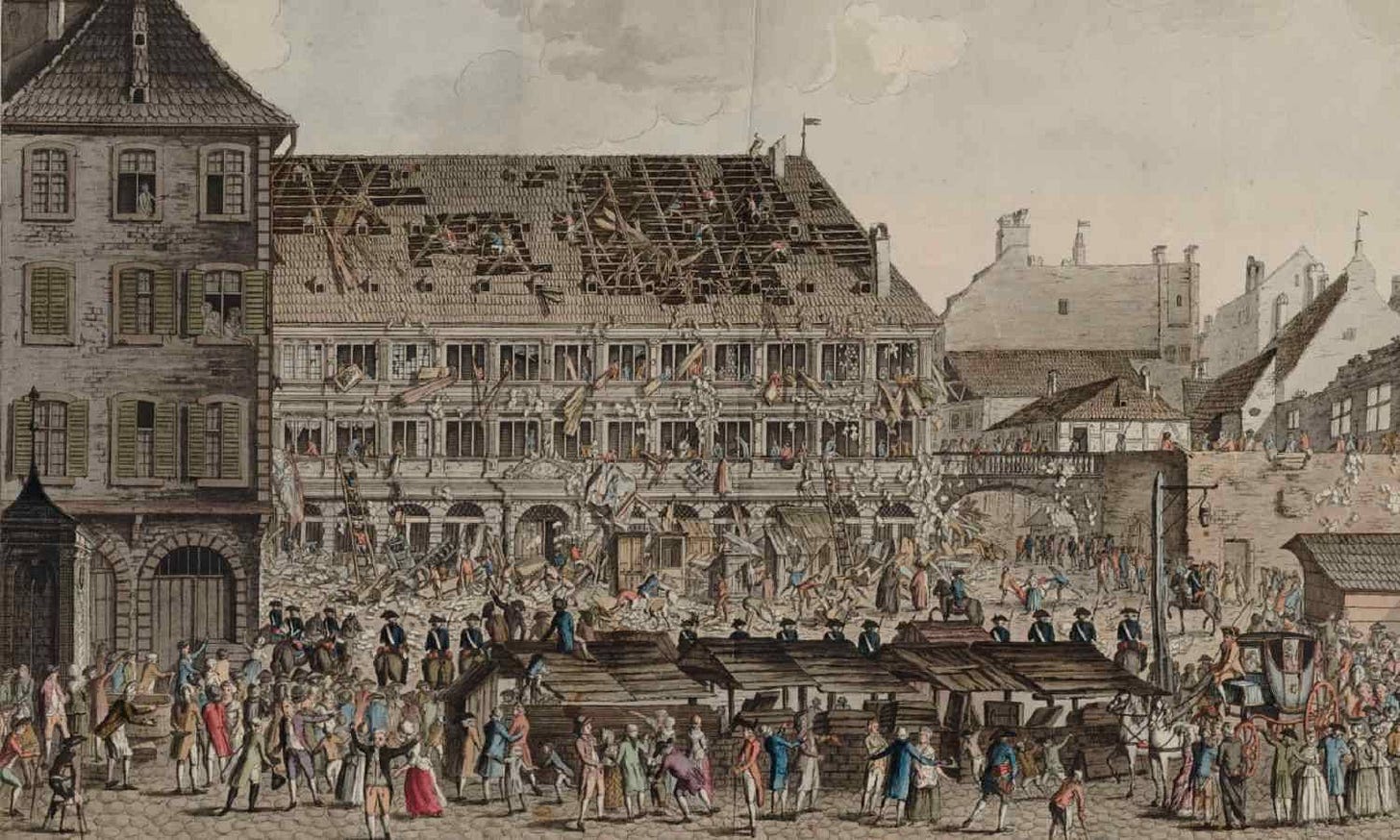Credulous and Crazed
Some thoughts on the madness of crowds from Gabriel Tarde (1843–1904)
Gabriel Tarde, L'Opinion et la foule (Paris: Félix Alcan, 1910), pp. 55-56 (my translation):
Crowds are not only credulous, but crazed. We note that they have several traits in common with asylum inmates: an inflated sense of pride, intolerance, and immoderation in all things. Like the insane, they are constantly moving between the two extreme poles of excitement and depression — sometimes they rage heroically, and other times they are overcome with panic. They have real collective hallucinations: grouped together, men believe that they are seeing and hearing things that, when isolated, they no longer see nor hear. And, when they believe they are being pursued by an invisible enemy, their faith is founded upon a deranged line of reasoning. We find a good example of this in Taine [specifically in Les Origines de la France contemporaine]. Towards the end of July 1789, under the influence of the national commotion which had sprung up everywhere, feverish crowds formed in the streets and public squares. A clamour spread from one person to the next, and soon invaded all of the Angoumois region, from Périgord to Auvergne: It was said that 10,000 or 20,000 bandits were on their way. People had seen them, the cloud of dust they generated was visible on the horizon, and they were coming to kill everyone. “Entire parishes down in that area ran to hide in the woods, abandoning their homes and carrying their furniture away with them.” Then the truth came to light [i.e., that there were no bandits], and the people returned to their towns. But then they yielded themselves up to exactly the same kind of thinking as those who suffer from persecutory delusions — since they observed a morbid anxiety within themselves, they imagined enemies to justify it. “We rose up because there was danger,” these groups of people told themselves. “And if we were not menaced by bandits, then it was because we were menaced by something else.” That “something else” being supposed conspirators. And from there they went on to persecutions that were all too real.



I wonder if this is similar to Canetti's "Crowds and Power" (one of those books I would like to read but have never gotten around to).
Still applicable!